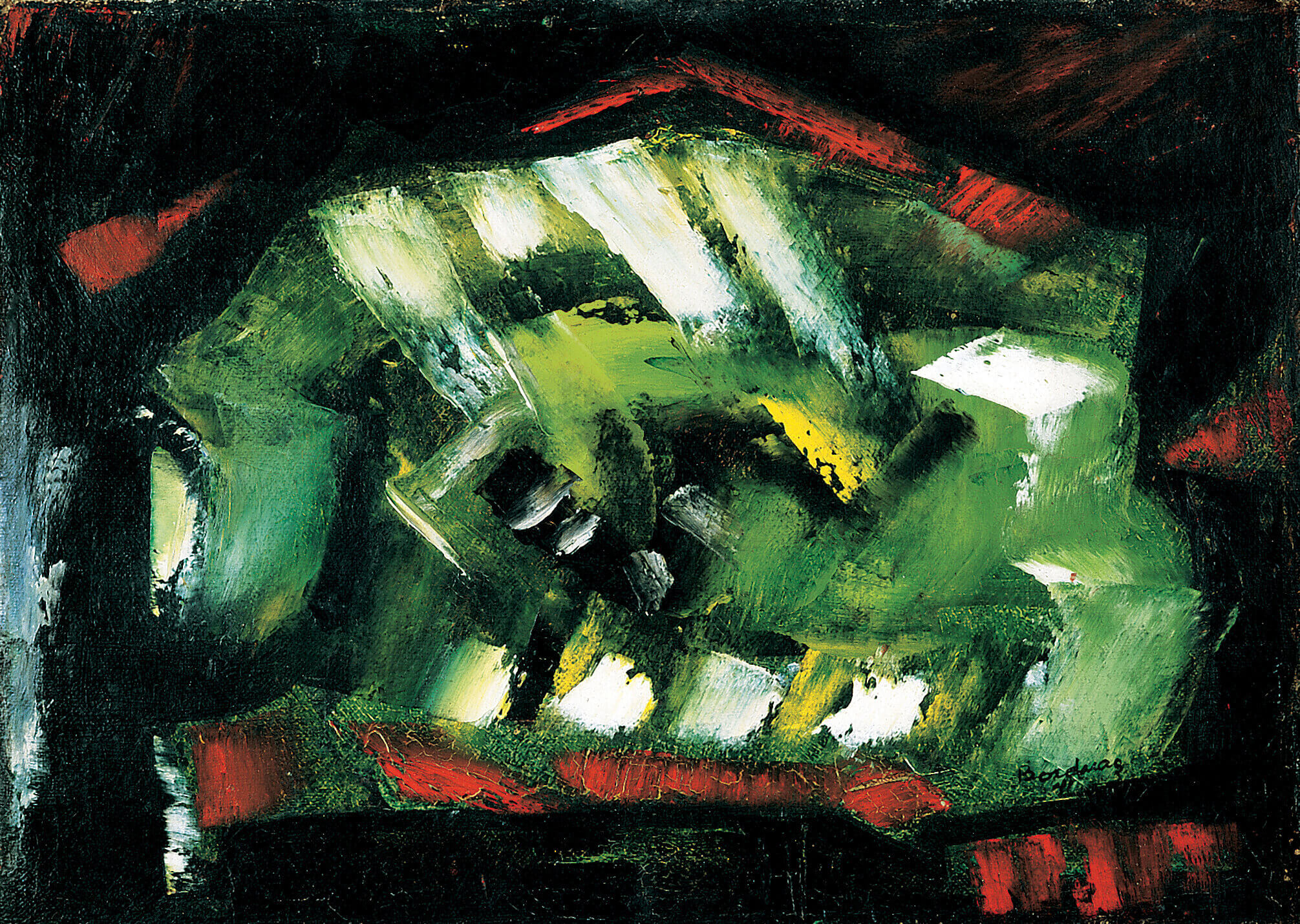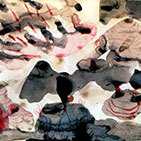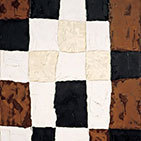Green Abstraction 1941

Paul-Émile Borduas, Green Abstraction (Abstraction verte), 1941
Oil on canvas, 26 x 36 cm
Montreal Museum of Fine Arts
In 1956 Borduas described Green Abstraction as his “first totally non-preconceived painting” and “one of the forerunners of the Automatiste tempest already gathering on the horizon.” To him an Automatiste painting was not preconceived; it was not planned in advance, with a final result or goal to be achieved. As he said in a CBC radio interview in 1950: “Perfectly well-intentioned people have often… said to me: ‘Monsieur Borduas, I really love your work, I love the colour. Only, I don’t understand [it].’ And then I’m obliged to answer them honestly: ‘I don’t understand any more than you do. Whatever it is you are searching for in the painting, I’m searching for it too. You are looking for the subject of this painting; I’m as much at a loss as you are.’”
In other words, the artist has no intellectual preconception of the painting before starting the work, and even its unconscious meaning is elusive. Interpretation can begin only when the work is finished; it is sometimes signified in the title (though not in this case) or can be discovered through conversations about the work with friends and connoisseurs.
Although this work was purchased by the poet Rémi-Paul Forgues shortly after Exhibition Borduas at the Dominion Gallery in Montreal in 1943, Borduas took it back in 1946 (in exchange for two gouaches), and it was later included in the 1951 exhibition Borduas and De Tonnancour, at the Art Gallery of Ontario. We lose track of the canvas until May 1962, when its new owner, Marcelle Ferron (1924–2001), showed it at the exhibition Borduas, Riopelle e la giovane pittura canadese (Borduas, Riopelle and young Canadian painting), at the Galleria Levi in Milan. Subsequently Ferron offered the painting to a friend, Guy Tridès, who in turn offered it to Florence Loeb, daughter of the renowned Paris art dealer Pierre Loeb. Florence Loeb would keep the work until 1980, when the art historian Claudette Hould recognized the work in Loeb’s home in France and persuaded her to repatriate it to Canada. The Montreal Museum of Fine Arts acquired the work in 1980 for its permanent collection.

 About the Author
About the Author
 More Online Art Books
More Online Art Books
 Acknowledgements
Acknowledgements